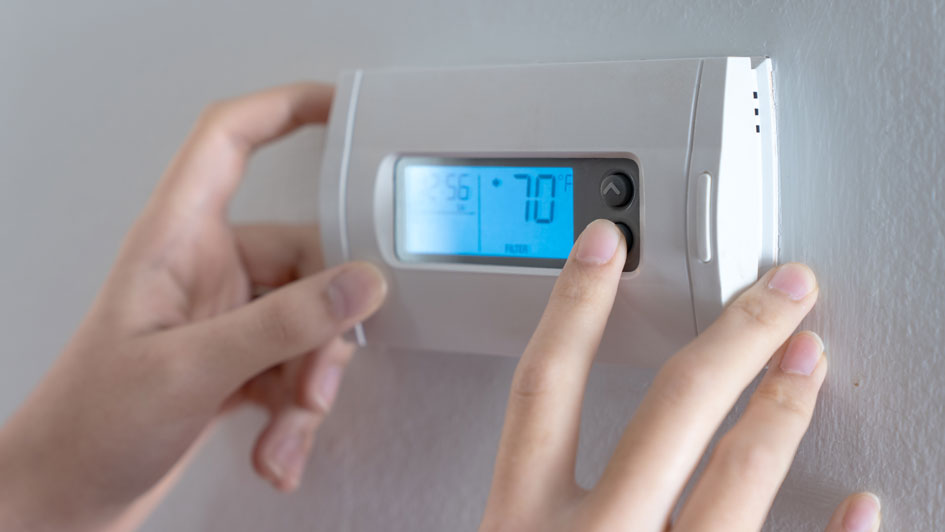
It's always nice when we manage to save money on our utility bills, but it just so happens there’s a way to lower energy use, even when you're not even home.
The secret is your thermostat. By using automatic schedules, you can tailor the temperature to your needs. This means establishing various temperature settings for when you’re at home, away or even when you’re sleeping.
With a few simple adjustments, you'll be able to enjoy comfortable temperatures while also keeping more of your money. Take a look at a few ways your thermostat doesn't have to use up all your summer spending money:
While at Home
Whenever you're at home, you want a nice range of pleasant temperatures. That’s why it’s best to set your thermostat lower in the summer while inside to appreciate the cool air.
But the most energy-efficient temperatures for when you're in your home during the summer is usually between 78 and 80 degrees Fahrenheit. With this adjustment, you can stay cool while still keeping your energy bills low.
While Out of the House
When it comes to setting the temperature for when you are out of the house in summer, it’s advantageous to set the thermostat higher than normal.
For some homes, you can set the thermostat to temperatures as high as 88 degrees while no one is home before lowering it back to the sweet spot of 78-80 degrees after you return. This way, your air conditioning won't have to work constantly to cool an empty house.
While Sleeping
For a full night's rest during summer weather, you want a nice cool temperature. A good rule of thumb is between 68-72 degrees Fahrenheit. This will keep you from getting too hot or too cold at some point overnight.
Other Ways to Use Less Energy:
- Install a smart thermostat: Switching to a smart thermostat in the summer helps save money on energy costs since it can plan your temperature adjustments according to your lifestyle and home environment. It'll take care of making changes while you are home or sleeping, before allowing it to warm up when no one is around. With models like the Lennox iComfort, you have the ability to remotely access and change the temperature through your smartphone, tablet or laptop. Requesting smart thermostat installation in your Milledgeville and Middle Georgia home can be the simplest strategy for maintaining comfortable, yet energy-efficient temperatures no matter where you are.
- Upgrade your HVAC system: Upgrading your HVAC system can save money in the long run. If a system boasts high energy efficiency, your utility bills will be lower because it requires less energy to reach your preferred temperatures. Air conditioning installation in Milledgeville and Middle Georgia is a great way to beat the heat in the summer.
- Keep up with AC maintenance: Whether or not you keep up with regular air conditioning maintenance in Milledgeville and Middle Georgia can have a significant impact on your utility bills. By regularly cleaning the coils, checking for damage and clearing air vents of dust and debris, you may notice your HVAC system run more efficiently. Increasing efficiency also limits strain on key parts and lowers operational costs, resulting in lower energy usage and subsequently, smaller bills.
- Replace your air filter regularly: A regular schedule for cleaning or replacing the HVAC system's air filter saves money by keeping airflow as smooth and consistent as possible. When filters become clogged, an AC unit has to work harder, and the strain can reduce the system’s life span and cause breakdowns.
- Check if you have enough insulation in the attic: Insulation is a vital part of maintaining an energy-efficient home, securing the hot air outside and the cool air inside over the summer. The North American Insulation Manufacturers Association (NAIMA) offers an official recommendation stating homeowners in souther states should install at least 13-14 inches of insulation, while colder climates do better with 16-18 inches.
- Review your air ducts: A leak in the air ducts could increase your energy bills much more than 20 percent, plus it can potentially allow harmful emissions from your water heater, clothes dryer and other appliances to get into the atmosphere of your home. Watching for signs of leaks and sealing them can address both concerns.
- Seal all other leaky spots in your home: Sealing up other leaks in your home with caulk, foam sealant or weather-stripping can help keep it cooler on hot summer days. You should also check for any gaps around windows, doors and even outdoor fixtures. Devoting time and effort to sealing leaks now can help you save a lot in the long term.
